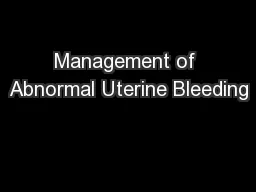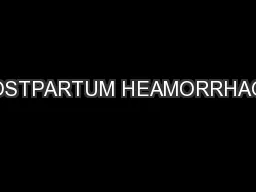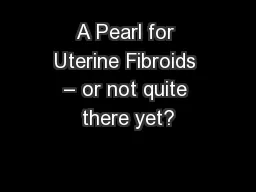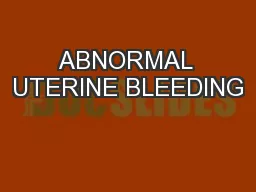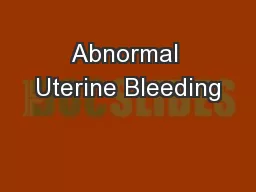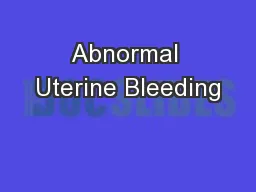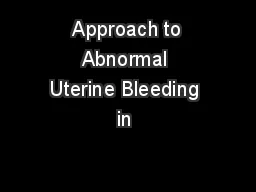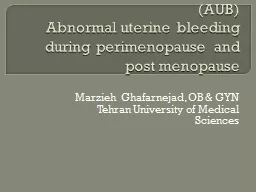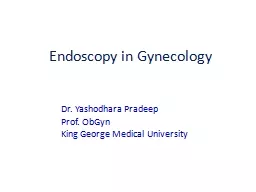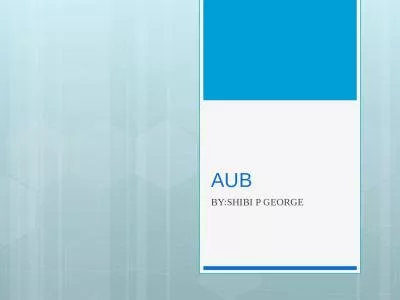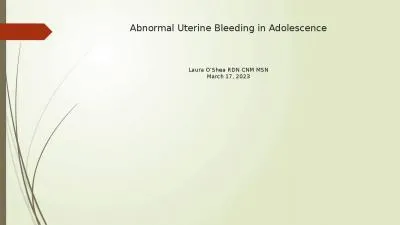PPT-Management of Abnormal Uterine Bleeding
Author : ellena-manuel | Published Date : 2018-01-12
Sonnie Kim Ashchi MD FACOG Patient No 1 Emily is 14 years old started her first menses last year irregular at the beginning now regular monthly But she reports
Presentation Embed Code
Download Presentation
Download Presentation The PPT/PDF document "Management of Abnormal Uterine Bleeding" is the property of its rightful owner. Permission is granted to download and print the materials on this website for personal, non-commercial use only, and to display it on your personal computer provided you do not modify the materials and that you retain all copyright notices contained in the materials. By downloading content from our website, you accept the terms of this agreement.
Management of Abnormal Uterine Bleeding: Transcript
Download Rules Of Document
"Management of Abnormal Uterine Bleeding"The content belongs to its owner. You may download and print it for personal use, without modification, and keep all copyright notices. By downloading, you agree to these terms.
Related Documents

